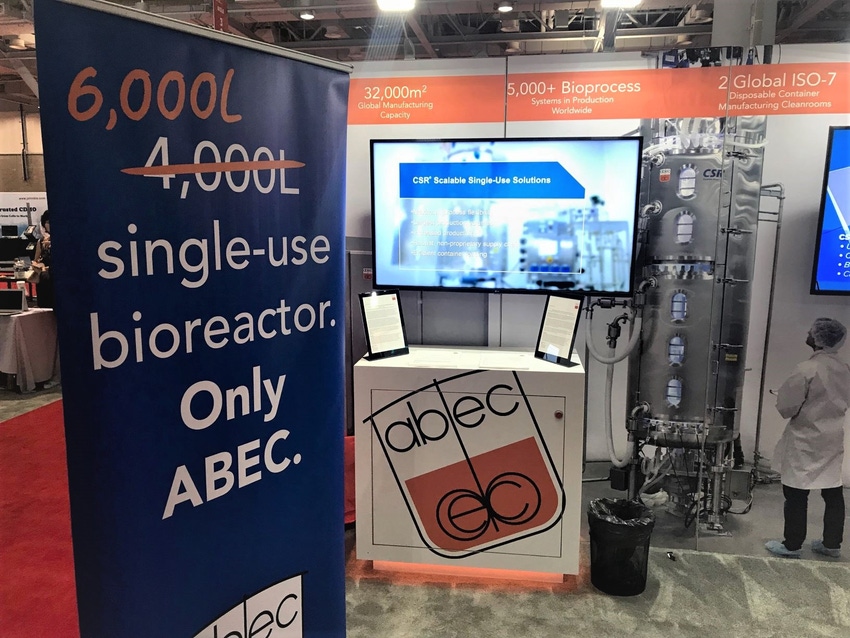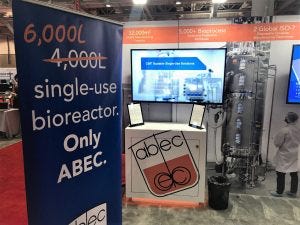Content Spotlight
Podcast: MilliporeSigma says education vital to creating unbreakable chain for sustainability
MilliporeSigma discusses the importance of people, education, and the benefits of embracing discomfort to bolster sustainability efforts.

ABEC has launched a single-use bioreactor system with a working volume of 6,000 L – three times that of industry’s standard upper limit.
While single-use bioreactors are a staple in the industry these days, one of the commonly discussed limitations of such systems in a commercial setting are their size. Most vendors offer bioreactors of 2,000 L as their upper limit leaving biomanufacturers to either run several systems in unison or opt for stainless-steel tanks if requiring larger volumes.
But ABEC has always looked beyond the 2,000 L limit of single-use, launching a 4,300 L bioreactor (with 3,500 L of working volume) in 2015 and a 4,900 L system with a 4,000 L working volume in 2017.

ABEC was at the BPI Conference in Boston this week
Now the firm has raised its game with the launch of its 7,500 L Custom Single Run (CSR) bioreactor with working volumes up to 6,000 L.
According to Eric Rudolph, VP of Single-Use Solutions at ABEC, the offering is a response from customers wanting greater economies of scale for cell culture production using disposable equipment.
“We are seeing demand globally from biopharma originator companies as well as CMOs,” he told Bioprocess Insider. WuXi Biologics and Emergent BioSolutions are among ABEC’s customers, but the decision to raise the volume was not due to a specific client.
Traditionally, single-use bioreactors have been restricted in size due to pressure challenges from the increased weight of the liquid medium in larger volume bags but Rudolph said ABEC “engineers within the constraints of the materials of construction components” to overcome this, and hinted that volumes could continue to increase going forward.
“Currently we are focused on 6,000 L as the maximum but as always we continue to assess market needs.”
The offering also brings biomanufacturers another option when assessing their commercial strategies, though Rudolph said whether a firm chooses to use stainless-steel, several 2,000 L bioreactors in configuration, or these larger disposable systems will depend on the specific projects.
“We continue to view the stainless steel/single use bioreactor choice for commercial manufacturing to be case-by-case based on multiple factors, including cost of goods targets, process requirements, capital/operating cost considerations, validation/regulatory aspects, number of products to be produced in the facility, production quantities needed, and the development and manufacturing history of the product.
“As a provider of both types of bioreactors, we are assisting manufacturers with this decision in an unbiased manner. Some general trends favoring single use include multi-product facilities, lower production quantities needed, and higher titer products, but even these are not absolute and we see continued viability of stainless steel for many applications.”
You May Also Like